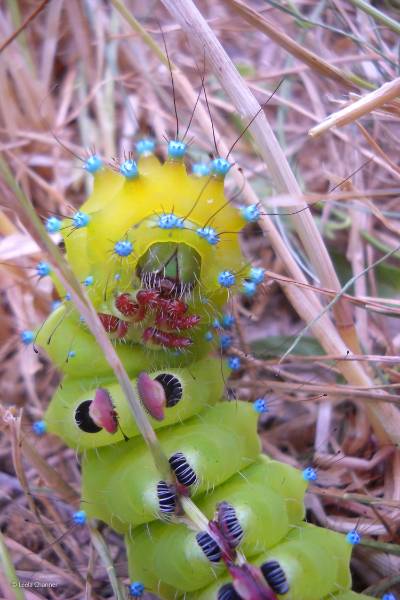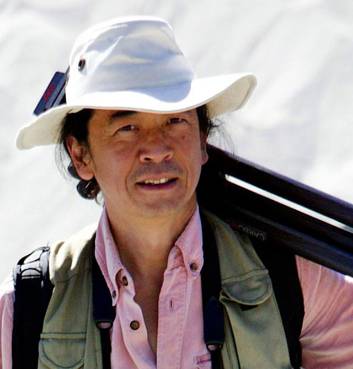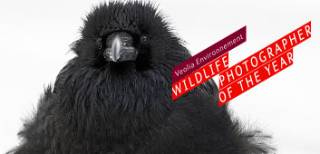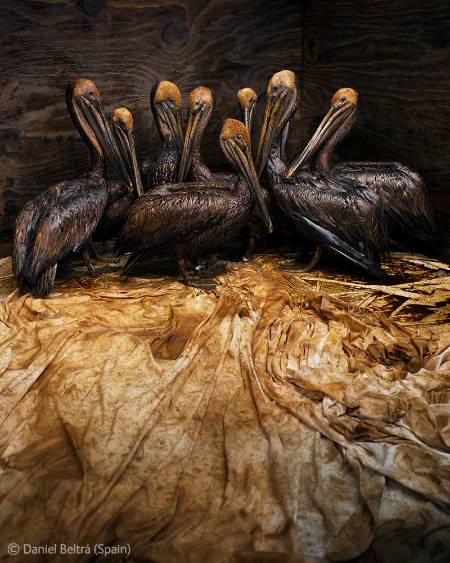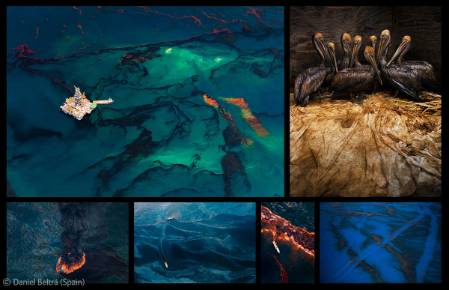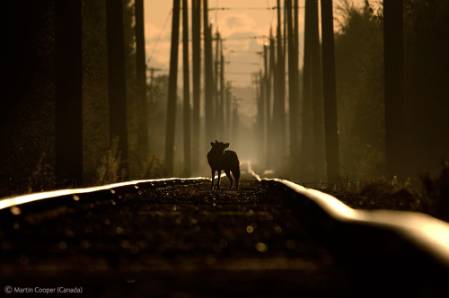It's two weeks to go until the Wildlife Photographer of the Year 2013 competition closes for entries on 25 February. Since we launched on 7 January, the images have been flooding in. And photographers have been very appreciative of the new registration and entry process, which we spent many months developing to improve image uploading and editing for entrants.
With these precious few days left to get those best shots submitted, I asked Gemma Ward from the Competition office for some thoughts on the kinds of images she always hopes to come across.
'Among the ones that I'd draw attention to from the 2012 competition winners is Dog days by South African photographer Kim Wolhuter. The wild dog is endangered and many photographers have chosen it as their subject in the past. But Kim went about it in a different way by telling more of a story. By including the African wild dog’s environment - the cracked earth – Kim created a graphic yet poignant backdrop that is so apt for this category, which highlights endangered species.'
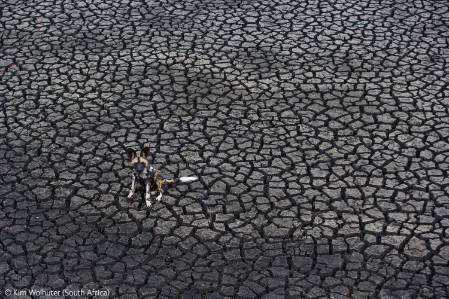
Kim Wolhuter has filmed Zimbabwe's endangered wild dogs for four years. Dog days won the Gerald Durrell award for Endangered Species in 2012. The mosaic mud landscape epitomises the increasingly fragmented world this puppy is growing up in.
'Another similar kind of mastery can be seen in Dipper dipping by the very young Danish photographer, Malte Parmo. Again, we see many images of dippers, but this one is actually 'dipping'! I love the way he really caught the essence of this bird in his picture and its full of 'caught-in-the-act' energy.'
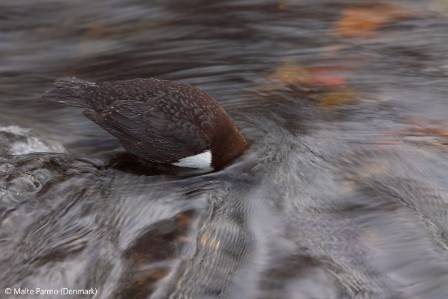
Young Malte Parmo was commended in the 10 Years and Under award for his image of these birds at a stream near his home in Copenhagen. He said of Dipper dipping, 'I think I managed to get the feeling of running water and an almost vibrating active dipper, its head under the water looking for food.’ Select all images to enlarge.
'Two other good examples of contrasted creativity,' says Gemma, 'are Sandra Bartocha's experimental Light show in the Creative Visions award category and Robert Zoehrer's geometric Hare in a Landscape which deservedly won the Nature in Black & White category.'
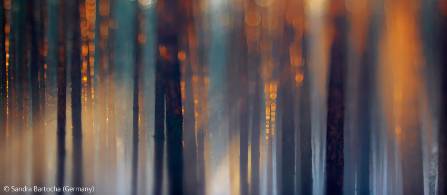
Light show: As the snow started to melt and a thick fog wrapped itself around the forest near her home in Potsdam, Germany, Sandra Bartocha experimented with a mirrorless camera and tilt lens to get the layers of sharpness and blurriness in this magical image. Her picture was specially commended in the 2012 Creative Visions award category.
'We never know what images we receive year to year - waiting for the judging to start is always exciting - but I can’t wait to see fresh pictures; images that we haven’t seen before which wow the jury and raise the bar yet again and which play an important role in moving the competition forward.’ Gemma Ward, Competition office
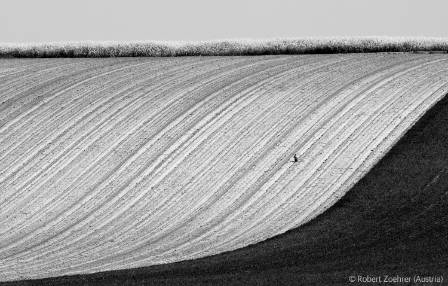
Hare in a landscape won the 2012 Nature in Black & White award. Robert Zoehrer's photo of a motionless brown hair sitting in a steep, yellow ploughed field lacked a focal point when it was in colour. ‘Once I saw the image in black and white,’ says Robert, ‘not only was the stark geometry highlighted but also the small hare became the centre of the composition rather than being lost among the colour.’
March will see the start of Round 1 in the judging process, when the immense challenge of sifting through all the 1000s of entries begins.
Find out about entering the 2013 competition
Visit the 2012 exhibition at the Natural History Museum in its final weeks
Interview with Roz Kidman Cox, wildlife and environmental writer
To give you some insight into the judging process and what kinds of things the judges consider in the selection process, we recently interviewed Roz Kidman Cox. Roz has been involved with the competition since 1981 and judged 32 of them. Here's what she has to say:
1. What’s more important – good equipment or a good eye?
Roz: Top equipment doesn’t make a top photographer – if it did, everyone would be taking marvellous pictures. With wild subjects, you do need certain lenses to get close enough for certain pictures. So equipment can be a limiting factor, for underwater photography in particular. But without a good eye and some heart and soul, you need a lot of luck to take a truly top shot.
2. Can you describe the moment you’ve found a winning photo? How does it make you feel? What makes a photo stand out?
Roz: It can be truly exciting to see a beautiful or outstanding picture make it to the top – that’s part of the joy of judging. (And there is often real sadness when a picture doesn’t quite make it.) Originality is often a crucial element. But it isn’t everything. A good picture has to last – and last – and move you every time you see it.
3. Can you tell the difference between an amateur of professional photo?
Roz: No, not when it comes to the finals. And that’s the beauty of judging anonymously. Of course, a technically bad picture is not likely to have been entered by a professional, and so in the early stages, it is possible to guess.
4. What are your favourite images from the 2012 competition?
Roz: The winning image this year, Paul Nicklen's Bubble-jetting emperors, is a picture I will never get tired of. And Steve Winter's Last look in his winning Wildlife Photojournalist of the Year sequence, is the most beautiful portrait of one of the last wild Sumatran tigers anyone will see.
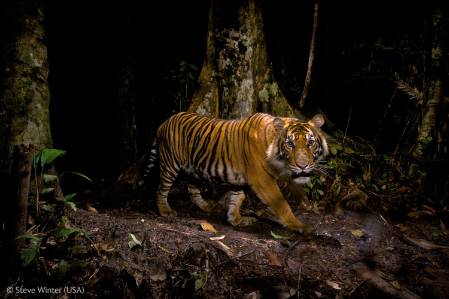
Last look by Steve Winter, in the sequence that won him the 2012 Wildlife Photojournalist Award, is one of Roz's favourites from 2012's winners. Steve's challenge to photograph this shy and critically endangered Sumatran tiger was to be in exactly the right position to get the tiger lit up centre-stage in front of the dark forest habitat.
5. Which categories are least popular?
Roz: I’m not sure that ‘popular’ is the right word. If you mean numbers of entries, portraits always comes to the top, presumably because it is far easier to take a good portrait than, say, to take a beautiful shot that also shows behaviour. Among the three behaviour categories, birds always comes out on top, because there are more birds than mammals (and lots of birdwatchers who become bird photographers). But few people seem to specialise in macro-photograph, which is why the ‘other animal’ behaviour category has comparatively few entries. But in terms of popularity of choice, I would suggest urban wildlife is at the bottom, as few people seem to choose to photograph subjects in an urban setting, though it is open to all to do so, whatever your equipment or situation.
6. Why do some photos get moved into different categories?
Roz: If there is a particularly strong picture in a particularly strong category that would do better in another one, we may move it at the very last stages of judging.
7. How likely/unlikely are you to pick photos which raise current political issues?
Roz: If a photograph makes you think, it will stand out in the judging. And if the subject is something which is both important and current, that will add to the power of the picture. So, yes, the judges will select shots that communicate powerful messages that are relevant.
8. How important is the message behind the photo rather than the beauty or technical excellence of the photo itself?
Roz: The aesthetics are what are judged first in all cases. Pictures entered for the World in our Hands or the photojournalism awards need to have a message or a story, but they must also be technically and aesthetically strong. So a picture of a very rare animal or bit of behaviour may not get through to the end if it isn’t also aesthetically strong.
9. How much of the picture information is read out to the judges – how anonymous is it really?
Roz: We judge the pictures blind, and we don’t see any of the information supplied by photographers. So if a picture needs to tell a story, that story has to be apparent. We may, however, ask the manager for details of the shot itself, e.g., where and how it was taken, if we are worried about anything, or even ask for the photographer to be contacted with questions, if there is a particular concern.
10. How subjective or objective are you / can you ever be as a judge?
Roz: Judging can never be totally objective unless there is a black-and-white/yes-no system of scoring. But there are enough judges to make sure that there is a consensus when it comes to selecting the final one hundred, and a good-enough mix of nationalities and backgrounds. And, yes, everyone’s cultural background affects their likes and dislikes, and everyone brings with them a memory storehouse of imagery.
11. Have you ever seen photos go through to the final selection that you haven’t agreed with?
Roz: Yes, of course – and ones drop out that I would have liked to be included. But that is part of the judging process. The great thing about the display of the final selection is that winning and commended pictures are displayed at the same size – only the overall winner is shown larger. This was a decision taken in the early days, to recognise that commended pictures can be as good as the winning ones.
12. What happens if there is stalemate / tie?
Roz: There can’t ever be a stalemate as there is always an uneven number of judging in a session. Also, the chair does have the power to intervene.
13. Will it count against someone if their image has been widely seen?
Roz: If your image has been widely seen, it will lose in freshness and impact. That said, if it is strong enough, it should last, however many times it is seen. Few, though, are strong enough. What certainly won’t get through are imitations of past winners or of well-known compositions.
14. What would you hope to see from our young competitors?
Roz: Originality and an eye for a good composition are what stand out. The subject certainly doesn’t have to be exotic or rare.
15. What tips do you have for young competitors entering this year?
Roz: A young person who knows their subject well will sooner or later find the opportunity to take something different or original. They will know when and where and will have time to work out how, which sometimes requires fieldcraft as much as technical knowledge.
16. What kind of photos would you like to see more of?
Roz: Personally, I think it is a shame we don’t seem more pictures of plants, pictures that convey their beauty or extraordinary nature. I also think there are so many missed opportunities that to take memorable pictures of nature in urban situations.
17. Do you have a sense of responsibility, as a judge?
Roz: Most certainly. The evenings during a judging week are spent worrying about whether you have made the right decision.
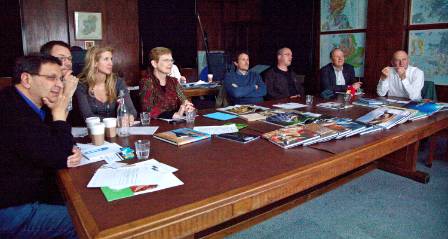
The jury gathered at the Natural History Museum for the final round of the 2012 competition judging.
18. What is the experience of judging really like?
Roz: Judging can be quite stressful and is certainly demanding. You have to keep questioning yourself and your own decisions, you have to be capable of expressing just why you do or don’t want a picture to go through and you have to be able to resign yourself to a majority decisions. It’s a feast of imagery, but that also means you have to have breaks in between to let the pictures rest in your mind. Often when you return to see the same pictures again, the impact of those first impressions will have faded enough for you to be able to let go of some shots. And the fact remains, that you have to look for reasons to exclude pictures if thousands are to be reduced to hundreds. But what is remarkable is how the best pictures retain the strength of those first impressions.
19. What is the atmosphere like in the judging room?
Roz: There’s always a good atmosphere. It’s an exciting and challenging thing to do, but we don’t come to blows (and only once in more than 30 years do I remember an unproductive argument). We do, however, argue strongly if there is a division of opinion, with the chair acting as mediator. Such discussions are often thought-provoking and stimulating, especially with such a variety of judges from different cultures and countries. It does get tiring, though, seeing so many pictures. So a plentiful supply of coffee and tea is essential, as are breaks.
20. What makes the contest so unique?
Roz: It is the world’s biggest showcase of photographs of nature, and it is still the most prestigious, which is why even the top photographers enter. To win or be commended in this competition really does mean something, and many careers have been made through the coverage that winning has brought.
21. Where do you think the competition is going / where would you like it to go? How has it changed?
Roz: In the years before the internet, the publication and exhibition of the winning and commended pictures was often the only way that wildlife photographers in different countries got to see and learn from each other’s work. So it became an important showcase and visual education for many aspiring photographers. The quality as well as the quantity has continued to rise as more people have access to cameras and as evolving digital equipment has allowed photography of subjects and situations that wouldn’t have been possible just five years ago, let alone in the days of film. I would hope the annual collection of imagery continues to inspire and that all the different audiences who view it worldwide are continually reminded just how amazing and beautiful the natural world is. The competition also has a role to play in showing how important photographs can be in storytelling. Finally, I still hope that, one day, the art world acknowledges that pictures of wild places and wild creatures can be regarded as art.



